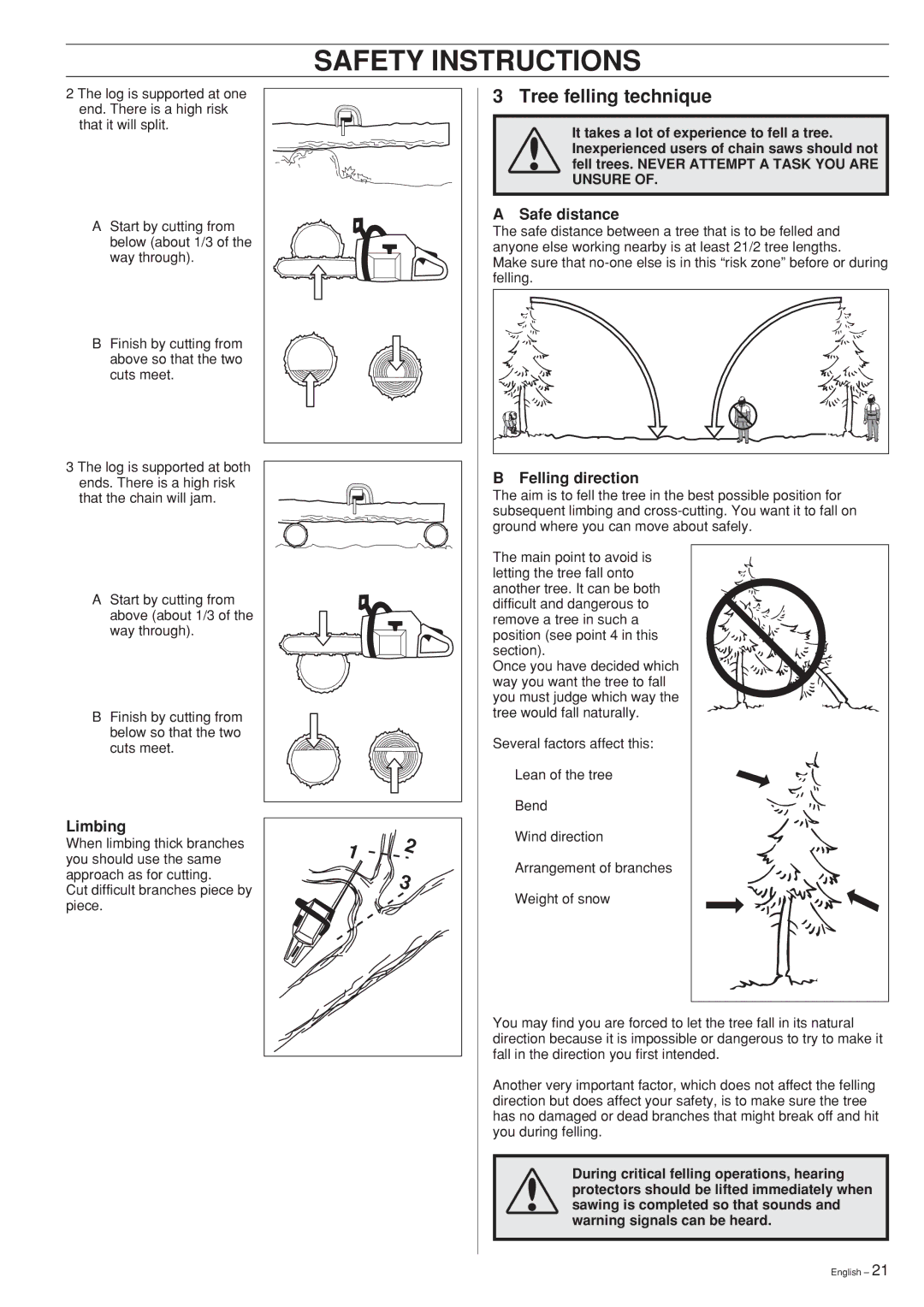345 EPA II, 340 EPA II, 345 EPA II, 350 EPAI specifications
Husqvarna, a renowned leader in the outdoor power equipment industry, offers a range of chainsaws designed for various needs and applications. Among their impressive lineup, the Husqvarna 340 EPA II, 345 EPA II, and 350 EPA I chainsaws stand out for their robust performance and innovative features.The Husqvarna 340 EPA II is designed to cater to both homeowners and professionals. Its lightweight design, weighing only 4.9 kg, ensures maneuverability without sacrificing power. The chainsaw is powered by a 40.9 cc engine, providing ample power for tasks such as pruning, cutting firewood, and light felling. One key feature is its X-Torq engine technology, which optimizes fuel efficiency while reducing harmful emissions, ensuring compliance with environmental regulations. The ergonomic handle and low vibration design enhance user comfort during extended use.
Next, the Husqvarna 345 EPA II takes the essentials of the 340 and amps them up. With a slightly larger 45.7 cc engine, this chainsaw offers increased cutting power, making it ideal for homeowners who require more robust performance. The chainsaw features an automatic oiler for consistent lubrication of the chain, which prolongs the lifespan of the chain and bar. Additionally, the 345 EPA II incorporates an easy start system, allowing users to start the machine with minimal effort, making it a practical choice for all skill levels.
Finally, the Husqvarna 350 EPA I is built for seasoned professionals who demand high performance. Equipped with a powerful 50.1 cc engine, it delivers exhilarating cutting speeds for demanding applications. The chainsaw features advanced ignition systems that ensure quick starts and reliable performance in various conditions. One of the standout characteristics of the 350 EPA I is its Air Injection technology, which centrifugal forces remove dust and debris from the air intake. This filtration system helps maintain engine efficiency and prolongs service intervals.
All three models are equipped with Husqvarna's signature features, including easy access to air filters for maintenance and a chain brake for added safety. Their durable construction and advanced ergonomics make them versatile tools, whether for occasional use in residential settings or for tackling rigorous tasks in commercial environments. With a commitment to innovation and sustainability, Husqvarna's EPA II chainsaws continue to set the standard for performance and reliability in the outdoor power equipment industry.

